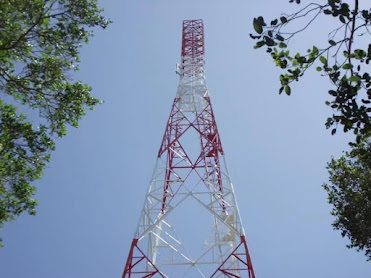Angular Steel Tower and Its Pros and Cons
An angular steel tower refers to a type of lattice tower used for various applications, including power transmission, telecommunication, and broadcasting. It is characterized by its angular or triangular lattice structure, which provides strength, stability, and efficient use of materials. Here are the pros and cons of angular steel towers:
Pros of Angular Steel Towers:
2. Height and Load Capacity: Angular steel towers can be designed to reach significant heights while supporting heavy loads. They can accommodate multiple sets of power transmission lines, antennas, and other equipment, making them versatile for various applications.
3. Efficient Material Use: The lattice structure of angular steel towers allows for the efficient use of steel materials, reducing the overall weight and cost compared to solid steel structures. The triangular lattice arrangement provides optimal strength-to-weight ratio, ensuring a balance between structural integrity and material efficiency.
4. Easy Maintenance: Angular steel towers are relatively easier to maintain compared to other tower types. The lattice structure provides easy access to equipment and conductors, simplifying inspection, maintenance, and repair activities. Technicians can climb the tower using safety equipment or use specialized equipment to reach different parts of the structure.
5. Cost-Effective: Angular steel towers are often more cost-effective than other tower types, such as monopole towers or guyed towers. Their efficient use of materials, ease of installation, and maintenance accessibility contribute to lower overall costs in terms of construction, transportation, and ongoing maintenance.
Cons of Angular Steel Towers:
1. Visual Impact: Angular steel towers, especially when installed in populated areas, can have a significant visual impact. The lattice structure may be considered less aesthetically appealing compared to monopole towers, which have a sleeker profile. This can be a concern in areas with strict aesthetic regulations or sensitive landscapes.
2. Land Requirement: Angular steel towers typically require larger land areas compared to monopole towers due to their wider base and guy wire anchoring requirements. This can limit their suitability for deployment in densely populated or congested areas where land availability is limited.
3. Construction Complexity: The construction process of angular steel towers is more complex and time-consuming compared to monopole towers. The lattice structure requires assembling and connecting multiple steel members, which may require specialized equipment, skilled labor, and longer construction timelines.
4. Maintenance Challenges: While maintenance of angular steel towers is generally easier compared to other tower types, certain maintenance tasks can be more challenging. The lattice structure has many interconnected members, which may require more extensive inspections for corrosion, fatigue, or structural integrity issues.
5. Environmental Factors: The lattice structure of angular steel towers can create wind resistance, leading to higher wind loads compared to monopole towers. This may require additional design considerations and reinforcement to ensure the tower can withstand strong winds without compromising its stability.
When considering the use of angular steel towers, it's important to assess the specific requirements of the project, including height, load capacity, visual impact, land availability, and maintenance considerations. By evaluating these factors, the suitability of angular steel towers can be determined for a given application.



.jpg)
评论
发表评论